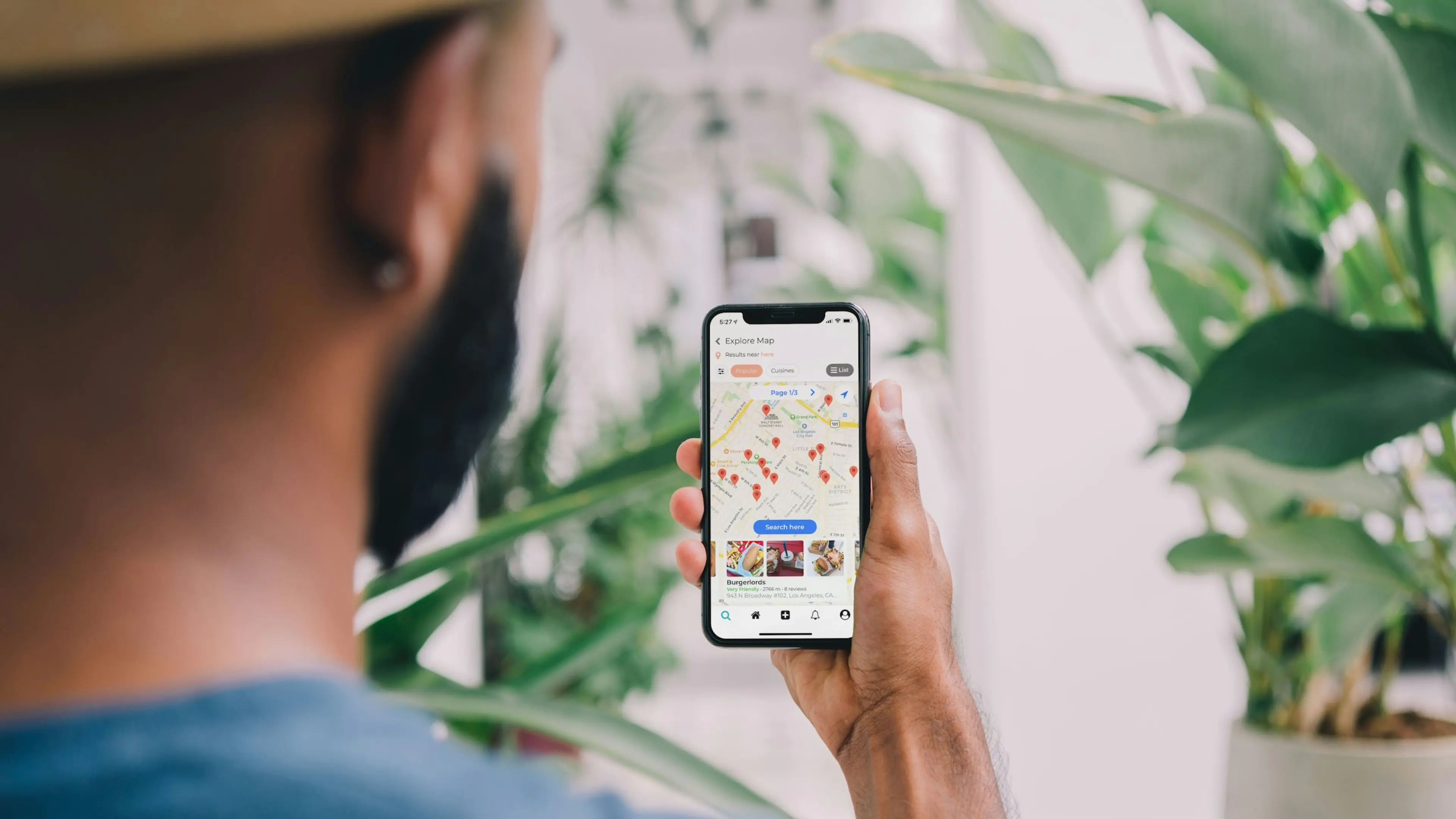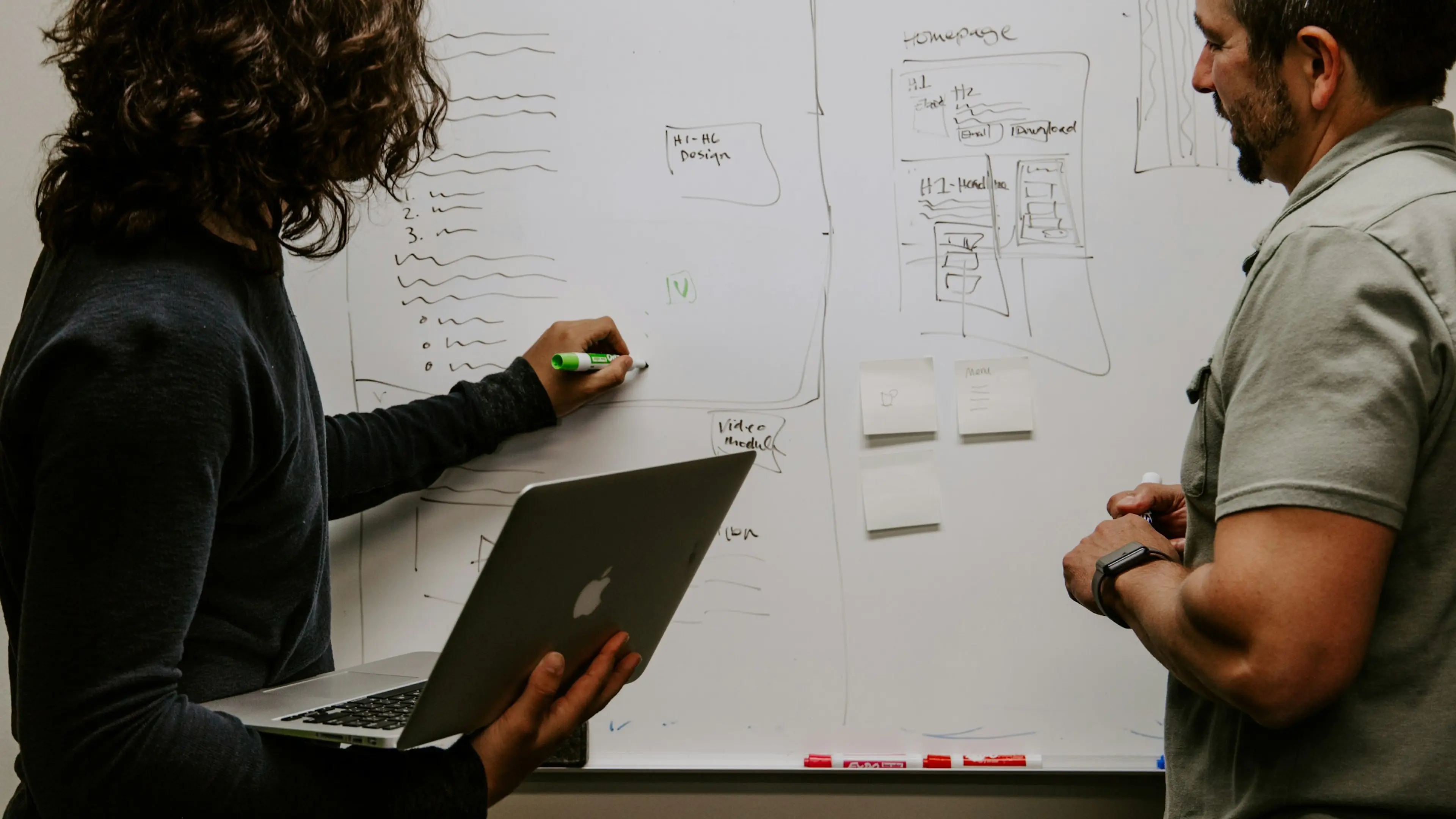6 December 2022 (updated: 19 July 2024)
16 Most Popular Types of Healthcare Software (Updated)
Chapters

See 16 types of emerging medical software systems that revolutionize the healthcare industry as we know it.
Digital transformation in healthcare
Even before the pandemic, the IT sector in healthcare was predicted to reach USD 326.1 billion in 2021 and is still expected to reach USD 662 billion by 2026.
Healthcare may be one of the most complex industries to digitalize as it involves many stakeholders: from hospitals and medical centers, through doctors, pharmaceutical and research companies, up to patients themselves. The logistics of healthcare apps have always been one of the most complex and convoluted (Learn how to design & develop a healthcare app). Some countries are moving faster than others, e.g. it’s been a year since Germany allowed digital product reimbursement with the Digital Healthcare Act - DVG.
After the pandemic struck, we’re also seeing some of the barriers being down (the entry barrier, and the digital skepticism barrier among some of the stakeholders). Healthcare stakeholders worldwide finally agree that digital is the way forward. Let's dive in and see what types of healthcare software revolutionize the industry and is the future of healthcare app development.
Electronic Health Records (EHR)
Electronic Health Records (EHR) is probably the most popular and the most crucial type of healthcare software. EHR systems store patients’ data: medical and family history, laboratory and other test results, prescribed medication history, and more.
The most important EHR feature is that the patient's electronic health record and information can be created and managed by authorized providers, and then shared with other providers across more than one healthcare organization. This does not only automate and streamline the providers’ workflow, as they do not need to collect the same information all over again from the same patient, but they also visibly improve the patient’s care. EHRs reduce errors, improve patient safety, and support better patient outcomes.
Some of the EHRs not only keep records of patient medications and allergies but automatically check an integrated medication database when a new medication is prescribed to alert the doctor to a potential conflict or allergy. They often include a finance module for invoicing and payment with billing information, and all of them: a separate portal for the patient to access their data.
Overall, EHRs reduce the risk of data replication, losing data, or important information about a patient's health. They are also cost-efficient, compared to paper medical records, or medical database software which are more likely to be duplicated, illegible, or destroyed over a long period of time.
EHRs are used in both clinics and hospitals and are usually integrated with internal hospital/clinic management software.
Telemedicine software
Telemedicine, so online doctor consultations via web & mobile apps, had reached full demand during the 2020 pandemic when the usual healthcare chains were disturbed, and many people could not visit their doctors for regular face-to-face appointments. This demand proved to be a catalyst for a global digital healthcare revolution.
Now, the need for telemedicine may have dropped from an all-time high, but this type of medical app has established its position in digital healthcare for good. COVID-19 broke down the main barrier for remote consultation healthcare providers, mainly: how to encourage doctors and patients to adopt that technology faster. More and more telemedicine apps and services appear on the market, and they offer a variety of features available within one platform: from in-app video conferencing, through file transfer (for patient’s test results), up to payment.
 Teladoc Health telemedicine app. Source: Teladoc
Teladoc Health telemedicine app. Source: Teladoc
- If you want to know more about telemedicine, download our 2021 Digital Healthcare Trends report to see how Docplanner, the world’s biggest healthcare platform, implemented their telemedicine service in the midst of the pandemic.
Remote Patient Monitoring (RPM)
Remote patient monitoring (RPM) is a software system able to collect patient data outside of healthcare institutions (clinics or hospitals), and in consequence, to gain more thorough information on the patient’s health, or even help conduct remote diagnosis based on that data. Remote patient monitoring software can also alert a doctor or a clinic if any kind of abnormality is detected. Similar to telemedicine services, remote patient monitoring gained momentum during the pandemic when the old health management processes were disturbed.
Some of the remote patient monitoring technology include heart rate and blood pressure monitors, glucose and blood oxygen meters, and wearable ECG monitors. In general, RPM technology and devices can visibly improve in-home healthcare services for people with chronic diseases, people who are recovering from surgery, and elderly patients.
Hospital Management Systems (HMS)
Hospital management software provides both information and management capabilities to three stakeholder groups present at a hospital: the administration, doctors and authorized healthcare professionals, and patients.
HMS often includes two separate portals, one with management-oriented features, and one portal available for patients. The management panel includes all administration and health information needed by the hospital - from food and medicine management, room booking and schedule, doctors’ timetables, and their scheduled appointments. But also completely mundane elements of electronic health record software like laundry management, utility expenditures, water and power consumption, supply inventory, etc.
The portal for patients has to include: a digitalized patient registration form, all admittance information (this is often synced with Electronic Medical Records), in some cases, patient billing information, insurance, notifications about admittance, procedures, doctor appointments, and all meds and prescriptions information.
Hospital management systems not only improve hospitals’ overall productivity, and streamline routines, but also improve patients’ experience during any interaction. The hospital management system allows hospitals to collect and analyze valuable data on all aspects of their activity.
Healthcare CRM Software
Healthcare customer relationship management (CRM) software helps medical practitioners, and clinics to maintain a relationship with patients. It does not differ significantly in terms of purpose from other industries’ CRMs, as it serves to automate sales of medical services, registration for services, and personalization based on provided data.
Healthcare CRMs provide data on the clinic’s daily work, as they can store clients' data: medical history, visits, and bills. They are able to send automated notifications to patients about upcoming checkups or prescription refill visits. Overall, their purpose is to streamline all clinic administrative tasks and enable drawing data-driven conclusions quicker. Thanks to a CRM, a clinic is able to better give patient care, monitor patients' satisfaction, identify recurring issues faster, and automate mundane administrative tasks.
E-prescription software
E-prescription software may differ from country to country as it’s highly reliant on Government regulations. The core value, however, does not change. E-prescribing software allows doctors not only to write new prescriptions but also to track the prescription history, renew or cancel them if necessary. In some countries, the software enables direct contact with a pharmacy of your choice for convenience.
In general, e-prescription software increases patients’ and doctors’ safety and time and allows doctors to check for any conflicts with the already taken medications.
Medical diagnosis software
We can distinguish between two types of medical diagnosis software: apps for patients, and a more complex type: diagnosis software for medical professionals.
Diagnosis apps for patients are often simple questionnaires or chatbots serving as symptom checkers that empower patients with knowledge based on medical expertise, rather than leaving them relying on Google Search. They became a commonly used tool during the pandemic that helped navigate patients through possible Covid-19 symptoms. Many governments employed this solution as a part of their strategy. But these self-diagnosis apps can be used in a variety of other conditions to aid patients who could be feeling powerless and lost facing the black hole of symptoms available on Google.
The other type of artificial intelligence diagnosis software is targeted at healthcare professionals. AI diagnosis software can support doctors in gathering and analyzing data and determining nonspecific disease symptoms contributing to quicker diagnosis, and research. All the anonymized information can be shared among healthcare institutions.
Appointment booking software
Appointment booking software is utilized by doctors, private clinics, and most recently, hospitals. Usually, it consists of two panels, a separate patient-facing panel and a medical practice management software panel (on the side of the clinic). Its main objective is fairly self-explanatory: it is to streamline the process of booking a doctor's visit. Patients can easily book an appointment, get notifications about it, provide relevant information to the doctor beforehand, and also reschedule or cancel the appointment.
From the medical equipment management software side, it allows the clinic to have a transparent and easily analyzed view of their doctors' schedules. For the clinic's reception, it is a good way to streamline the mundane tasks of confirming and rebooking all scheduled appointments.
 Docplanner's "ZnanyLekarz" in Poland. A doctor appointment scheduling platform available in 12 countries. Source: Docplanner
Docplanner's "ZnanyLekarz" in Poland. A doctor appointment scheduling platform available in 12 countries. Source: Docplanner
Health tracking apps
Health tracking apps are definitely the widest group of healthcare software, as they may involve: physical activity tracking and movement tracking, dieting and weight loss, and, the recently very popular type: mental health & wellbeing apps.
The argument that they are quasi-medical apps and not directly connected to professional medical software is definitely outdated. Especially in the light of Germany’s reimbursement of digital health apps’ costs, so in other words: allowing doctors to prescribe digital apps as a part of their patient's treatment.
Health tracking apps for consumers have great potential not only to popularize taking care of oneself but also to serve as a data source informing about a patient's health to drive personalized healthcare. Very often they are companion apps to wearables, with the most popular being the Apple Watch, and Fitbit for your casual data like movement, heart rate, and sleep. But not exclusively: they are also rings, necklaces, and other bracelets made by startups that go beyond that and aim at helping with fertility (measuring your body’s temperature, and specific day of the menstrual cycle), diabetes, etc.
Medical billing software
Billing software is dedicated to financial operations at healthcare institutions. It helps manage invoices, receipts, and insurance claims and allows for all transactions. Healthcare billing software is still available as stand-alone apps, but many Hospital Management Systems also offer this feature.
Clinical trial management software
Clinical trial management software enables medical professionals to accurately plan, track, and manage their clinical studies. They are often web-based software solutions that ensure compliance, monitor patients’ enrollment or recruitment, and manage finances. CTM software provides flexibility, often allows for collaboration in real-time, and, thanks to it being web-based it can be accessed by clinical teams from any place and at any time, without any other software needed. This is also the key advantage of clinical trial management software: it provides a centralized and single repository for all clinical trial data, improving data collection, its quality, and consistency.
Mobile health (mHealth) apps
While initially considered to be too disruptive by some healthcare workers, mHealth apps seem to be here to stay. They make it effortless for patients to complete a variety of administrative tasks including paying their medical bills, booking new appointments, and completing consultations with a nurse or doctor. A good mHealth app allows patients to access various types of telehealth services.
One compelling aspect of these apps is their integration with EMR/EHR software. With consent, healthcare professionals can access the medical records they need without leaving their conference call with a patient.
This information can then be seamlessly shared with relevant parties for referrals, prescriptions, and much more. When integrated with local or international infrastructure, mHealth apps can be the best kind of disruptive – a new digital force that redefines the way that patients access their healthcare.
There are two types of mHealth apps currently on the market – those that function as commercial tools (for example, mental health platform Unmind), and those in the public domain, such as UK’s Patient Access app leveraged by the NHS.
Remote medical training
Patients aren’t the only people taking advantage of the various types of telehealth services out there; medical staff is also benefiting from a plethora of new technologies. Training and education are two areas that have come in leaps and bounds in recent years.
Integration with tools like Virtual or Augmented Reality can help students interact more directly with the subject material. Course material, feedback, and extra training exercises can all be accessed remotely. Surgery training is a field that seems to benefit the most from AR and VR solutions. Osso VR is a great example of this. The software solution enables future surgeons to learn and practice taking as many tries as they need.
 Source: OssoVR
Source: OssoVR
Medical imaging
Medical imaging is a type of telehealth technology that enriches existing datasets with data derived from images. In many cases, AI and machine learning are used to analyze data far more quickly than a human alone can.
An MRI or PET scan taken in Italy can be forwarded to a clinic in the United States and accurate analysis and potential diagnosis can be returned in a matter of hours. As a result, even those suffering from extremely rare conditions will have a chance of proper diagnosis. Given all of the above, it’s clear that the potential here for B2B integration is huge.
Personal health record software
Rather than tracking lifestyle choices like regular exercise or meditation, personal health record software focuses on the monitoring of diseases. Patients can submit regular updates in the form of diary entries and provide powerful insights to their healthcare provider.
A notable example of this kind of technology is the Tulipa app. Patients with Parkinson’s can use the software to keep track of their condition and allow their doctor to provide the most appropriate care.
Medical research software
Medical research platforms serve as a database gathering important medical literature, reviews, and journals, all backed by thorough research. Such platforms allow medical practitioners to apply the newest data to a patient's diagnosis and further treatment.
The main purpose of the medical software solution is to educate medical staff and provide them with access to up-to-date information across medical fields. Additionally, doctors can share information about unusual symptoms for further research.
Medical software driving the digital transformation in healthcare
Digital innovation is going to affect the healthcare industry more, not less. With the primary barriers being down due to the pandemic - the digital health adoption by both specialists and patients and the Governments seeing digital as the key factor in building a more equal and effective future, we can only expect more disruptive tech coming.
See also
- 7 ideas for a healthcare app the world still needs - social distancing employed almost overnight in the majority of the world, only reinforced the urgent need for healthcare app ideas & medical app development.
- Digital Health Apps Guide — See insights on digital transformation in healthcare, what lies ahead, and how to make it work for your product (PDF download).
You may also like

Native vs Cross-Platform App Development: Which is Right for Your Business
3 September 2024 • Maria Pradiuszyk




